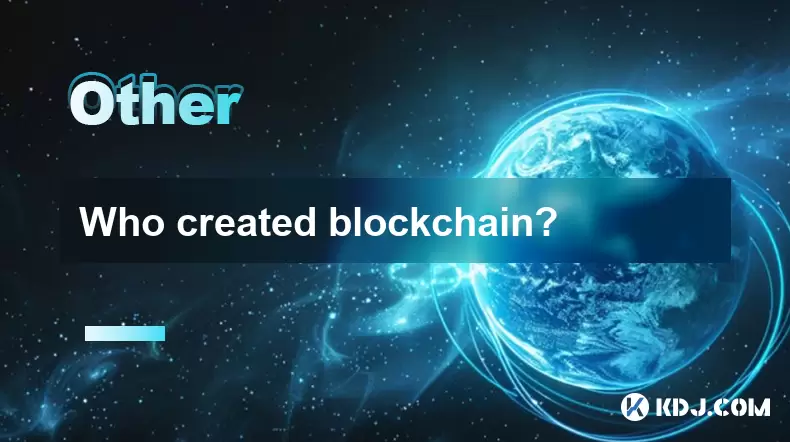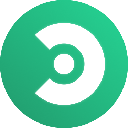-
 Bitcoin
Bitcoin $113900
-1.39% -
 Ethereum
Ethereum $3517
-4.15% -
 XRP
XRP $3.009
1.59% -
 Tether USDt
Tether USDt $0.9997
-0.04% -
 BNB
BNB $766.8
-1.41% -
 Solana
Solana $164.6
-2.38% -
 USDC
USDC $0.9998
-0.02% -
 TRON
TRON $0.3277
0.65% -
 Dogecoin
Dogecoin $0.2023
-1.67% -
 Cardano
Cardano $0.7246
0.05% -
 Hyperliquid
Hyperliquid $38.27
-4.77% -
 Sui
Sui $3.528
-0.52% -
 Stellar
Stellar $0.3890
-0.73% -
 Chainlink
Chainlink $16.16
-2.69% -
 Bitcoin Cash
Bitcoin Cash $539.9
-4.38% -
 Hedera
Hedera $0.2425
-2.00% -
 Avalanche
Avalanche $21.71
-0.97% -
 Toncoin
Toncoin $3.662
5.73% -
 Ethena USDe
Ethena USDe $1.000
-0.02% -
 UNUS SED LEO
UNUS SED LEO $8.964
0.35% -
 Litecoin
Litecoin $107.7
2.33% -
 Shiba Inu
Shiba Inu $0.00001223
-0.40% -
 Polkadot
Polkadot $3.617
-0.97% -
 Uniswap
Uniswap $9.052
-2.49% -
 Monero
Monero $295.1
-3.79% -
 Dai
Dai $0.9999
0.00% -
 Bitget Token
Bitget Token $4.315
-1.85% -
 Pepe
Pepe $0.00001060
0.11% -
 Cronos
Cronos $0.1342
-2.72% -
 Aave
Aave $256.0
-0.87%
How do public chain nodes reach consensus? What role does proof of work play
Public blockchains use consensus mechanisms like Proof of Work to ensure all nodes agree on the ledger's state, securing the network and validating transactions.
May 16, 2025 at 02:49 am

Consensus mechanisms are fundamental to the operation of public blockchains, ensuring that all nodes on the network agree on the state of the ledger. One of the most well-known consensus mechanisms is Proof of Work (PoW), which plays a crucial role in securing the network and validating transactions. In this article, we will explore how public chain nodes reach consensus and delve into the specifics of Proof of Work.
Understanding Consensus in Public Blockchains
Public blockchains are decentralized networks where multiple nodes participate in maintaining the integrity and security of the ledger. Consensus is the process by which these nodes agree on the validity of transactions and the state of the blockchain. Without a central authority, consensus mechanisms are essential to prevent double-spending and ensure the network's integrity.
Types of Consensus Mechanisms
There are several types of consensus mechanisms used in public blockchains, each with its own strengths and weaknesses. Some of the most common include:
- Proof of Work (PoW)
- Proof of Stake (PoS)
- Delegated Proof of Stake (DPoS)
- Practical Byzantine Fault Tolerance (PBFT)
Each of these mechanisms has a different approach to achieving consensus, but they all aim to ensure that the network remains secure and decentralized.
The Role of Nodes in Consensus
Nodes in a public blockchain network play a critical role in reaching consensus. There are typically two types of nodes:
- Full Nodes: These nodes store a complete copy of the blockchain and validate all transactions and blocks. They play a crucial role in maintaining the integrity of the network.
- Mining Nodes: In PoW-based blockchains, these nodes compete to solve complex mathematical puzzles to add new blocks to the blockchain. They are also known as miners.
Both types of nodes are essential for the consensus process, as they work together to validate transactions and maintain the blockchain's integrity.
How Proof of Work Works
Proof of Work is the consensus mechanism used by Bitcoin and several other cryptocurrencies. It involves miners competing to solve a cryptographic puzzle, which requires significant computational power. The first miner to solve the puzzle gets to add a new block to the blockchain and is rewarded with newly minted cryptocurrency and transaction fees.
The process of solving the puzzle is known as mining. Miners use specialized hardware to perform numerous calculations per second, trying to find a hash that meets the network's difficulty target. This hash must be below a certain value, which is adjusted periodically to maintain a consistent block time.
The Importance of Difficulty Adjustment
The difficulty adjustment in PoW is crucial for maintaining the stability of the network. If the total computational power of the network increases, the difficulty of the puzzle increases to ensure that blocks are added at a consistent rate. Conversely, if the computational power decreases, the difficulty decreases to maintain the block time.
This adjustment mechanism ensures that the network remains secure and that the rate of new block creation remains predictable, which is essential for the overall stability of the blockchain.
Security and Decentralization in PoW
One of the primary benefits of Proof of Work is its ability to provide security and decentralization. The high computational cost of mining makes it extremely difficult for any single entity to control the majority of the network's mining power, which would be required to launch a 51% attack.
Additionally, the decentralized nature of PoW means that anyone with the necessary hardware can participate in mining, contributing to the overall security and resilience of the network.
Energy Consumption and Environmental Impact
While Proof of Work has proven to be an effective consensus mechanism, it is not without its drawbacks. The most significant criticism of PoW is its high energy consumption. The computational power required to mine new blocks consumes a significant amount of electricity, leading to concerns about the environmental impact of cryptocurrencies that use PoW.
Efforts are being made to address these concerns, such as the development of more energy-efficient mining hardware and the exploration of alternative consensus mechanisms that consume less energy.
The Role of PoW in Transaction Validation
In addition to securing the network, Proof of Work plays a crucial role in transaction validation. When a new transaction is broadcast to the network, it is verified by full nodes to ensure that it is valid and that the sender has the necessary funds. Once verified, the transaction is included in a block, which is then mined by miners.
The mining process not only adds the block to the blockchain but also confirms the transactions within it. Once a block is added to the blockchain, the transactions it contains are considered confirmed and are irreversible.
Frequently Asked Questions
Q: Can Proof of Work be used in private blockchains?
A: While Proof of Work is most commonly associated with public blockchains, it can technically be used in private blockchains as well. However, private blockchains often use different consensus mechanisms that are more suited to their specific needs, such as Practical Byzantine Fault Tolerance (PBFT).
Q: How does Proof of Work prevent double-spending?
A: Proof of Work prevents double-spending by ensuring that once a transaction is included in a block and added to the blockchain, it is considered irreversible. The high computational cost of mining makes it extremely difficult for an attacker to alter the blockchain and double-spend coins.
Q: What happens if two miners solve the puzzle at the same time?
A: In the event that two miners solve the puzzle at the same time, a temporary fork in the blockchain can occur. The network will continue to mine on both forks until one of them becomes longer. The longer fork is then considered the valid blockchain, and the shorter fork is discarded. This process ensures that the network eventually reaches consensus on a single version of the blockchain.
Q: Can Proof of Work be replaced by more energy-efficient consensus mechanisms?
A: While Proof of Work has been the dominant consensus mechanism for many years, there is ongoing research and development into more energy-efficient alternatives, such as Proof of Stake. Some cryptocurrencies have already transitioned to PoS or other mechanisms, but the effectiveness and security of these alternatives are still being evaluated.
Disclaimer:info@kdj.com
The information provided is not trading advice. kdj.com does not assume any responsibility for any investments made based on the information provided in this article. Cryptocurrencies are highly volatile and it is highly recommended that you invest with caution after thorough research!
If you believe that the content used on this website infringes your copyright, please contact us immediately (info@kdj.com) and we will delete it promptly.
- CoinDCX, Coinbase, and Cyber Heists: A Crypto Rollercoaster
- 2025-08-02 14:30:12
- Solana, Axiom Exchange, and Revenue: Navigating the Future of DeFi
- 2025-08-02 12:50:12
- Metaplanet's Bitcoin Treasury Move: A Bold Bet or Risky Gamble?
- 2025-08-02 14:30:12
- Cardano (ADA) and Altcoin Gains: Navigating the Crypto Landscape
- 2025-08-02 12:55:11
- Bitcoin, MicroStrategy, and Crypto Taxonomy: Decoding the Future of Digital Assets
- 2025-08-02 14:50:11
- Bitcoin's Bearish Momentum: Fakeout or the Real Deal?
- 2025-08-02 12:30:12
Related knowledge

What is the double-spending problem and how does blockchain prevent it?
Aug 02,2025 at 01:07pm
Understanding the Double-Spending ProblemThe double-spending problem is a fundamental challenge in digital currency systems where the same digital tok...

What is the difference between a blockchain and a database?
Aug 01,2025 at 09:36pm
Understanding the Core Structure of a BlockchainA blockchain is a decentralized digital ledger that records data in a series of immutable blocks linke...

How does blockchain handle scalability?
Aug 02,2025 at 02:58pm
Understanding Blockchain Scalability ChallengesBlockchain scalability refers to a network's ability to handle an increasing volume of transactions wit...

What is a hash in a blockchain?
Aug 02,2025 at 05:28am
Understanding the Concept of Hash in BlockchainA hash in the context of blockchain technology refers to a unique digital fingerprint generated by a cr...

What is a hash in a blockchain?
Aug 02,2025 at 04:43am
Understanding the Concept of Hash in BlockchainA hash in the context of blockchain technology refers to a unique digital fingerprint generated by a cr...

Who created blockchain?
Aug 02,2025 at 05:15am
What Is Blockchain and Why Does Its Origin Matter?Understanding who created blockchain begins with recognizing what blockchain actually is. Blockchain...

What is the double-spending problem and how does blockchain prevent it?
Aug 02,2025 at 01:07pm
Understanding the Double-Spending ProblemThe double-spending problem is a fundamental challenge in digital currency systems where the same digital tok...

What is the difference between a blockchain and a database?
Aug 01,2025 at 09:36pm
Understanding the Core Structure of a BlockchainA blockchain is a decentralized digital ledger that records data in a series of immutable blocks linke...

How does blockchain handle scalability?
Aug 02,2025 at 02:58pm
Understanding Blockchain Scalability ChallengesBlockchain scalability refers to a network's ability to handle an increasing volume of transactions wit...

What is a hash in a blockchain?
Aug 02,2025 at 05:28am
Understanding the Concept of Hash in BlockchainA hash in the context of blockchain technology refers to a unique digital fingerprint generated by a cr...

What is a hash in a blockchain?
Aug 02,2025 at 04:43am
Understanding the Concept of Hash in BlockchainA hash in the context of blockchain technology refers to a unique digital fingerprint generated by a cr...

Who created blockchain?
Aug 02,2025 at 05:15am
What Is Blockchain and Why Does Its Origin Matter?Understanding who created blockchain begins with recognizing what blockchain actually is. Blockchain...
See all articles

























































































